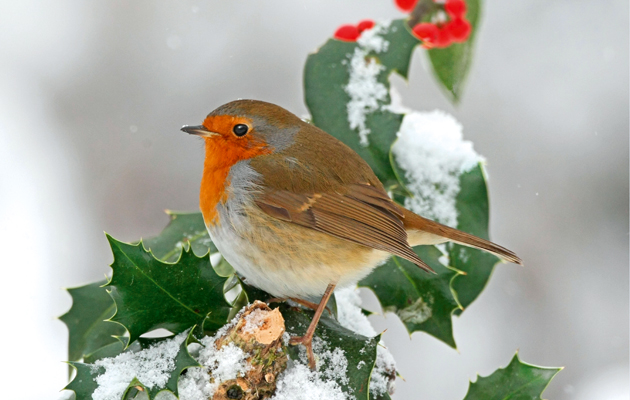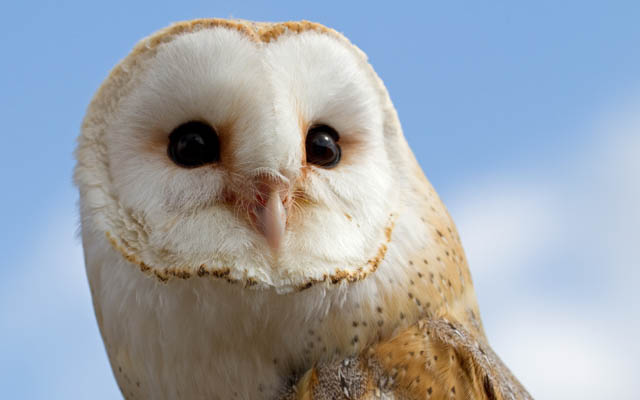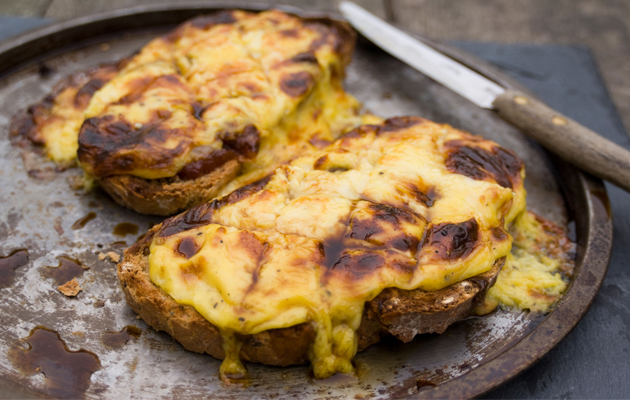The red-breasted rascal
David Profumo reports on a vicious, quarrelsome bird.


Beloved by myth-makers and a mascot of modern Yuletide, Robin Redbreast is a vicious little bird and, despite its jaunty tailoring and winsome, liquid eye, it’s historically so associated with ill fortune that some country folk still won’t have it on their Christmas cards. Cute, plumpish and too familiar to warrant much physical description, Erithacus rubecula is distinguished by its tawny orange forehead, neck and throat, which is common to both sexes (the nickname robin was formally accepted by ornithologists only in 1952). Nostalgic emigrants have periodically dubbed other ruddy-tinged species ‘robins’, notably a North American thrush that looks as if its fuselage has been dunked in tomato soup.
Millions of redbreasts breed across Britain, with limited southerly migration in autumn. Our robin is a feeble flier (it’s estimated to need some 9,240 wing beats per mile) and its innate curiosity renders it vulnerable to trapping. Who killed Cock Robin? Well, many used to end up in Continental roasting pans and their corpses were once plentiful around Mediterranean markets, strung up like pom-poms. Thomas Muffet— father of little Miss— wrote that the ‘ruddock’ was ‘esteemed a light and good meat’ as part of a Tudor diet.
Naturally a denizen of thick hedgerow cover, the robin has evolved as a bold haunter of human homesteads, where he seeks out scraps to supplement the usual fare of worms, insects and spiders. Head cocked as if pensive, he attends the turning of earth by gardeners, ploughmen and gravediggers. His hops are punctuated by what one naturalist describes as a ‘characteristic epileptic stoop’. Any avian interlopers are ruthlessly repelled.
Essentially a little brown yob with fabulous PR, Cock Robin has inspired a cavalcade of saccharine minstrelsy from poets as disparate as Chaucer and Betjeman. donne admired its ‘red stomacher’ and Wordsworth—who includes it in 14 poems—was frequently moved to mawkish depths, depicting one redbreast comforting an old cottager: ‘Dear intercourse was theirs, day after day.’ No doubt these visits kept the hermit’s pecker up.
Renowned since ancient times as an avis solitaria, the robin is indeed a loner, with a passion for fighting. To attract a mate and secure sufficient feeding territory, the male engages in belligerent boundary disputes, wherein scarlet-chested bluffing may lead to actual bloodshed. He’s even obstreperous in aviaries, with a penchant for pecking the skulls of linnets.
His chief charm, however, is that— apart from a lull during the summer moult—he is a year-round songster and so, unusually, is the female. As well as their stroppy tsip tseep alarm call, robins do produce a soft, plaintive melody that many humans find engaging—particularly so in these quieter months of winterlude.
Pair formation may occur by late December, although there is precious little wooing prior to the March breeding season. Apart from some ‘courtship feeding’ by the male, robins indulge in minimal pre-nuptial display. Coition is perfunctory and infrequent. The female constructs her nest—a cup of grass and leaves lined with feathers— without masculine assistance and in it lays between four and seven sandy-speckled eggs. Robins are niche nesters and recorded sites include a saucepan, a lectern, an aeroplane, a hanged man’s skull, an unmade bed during breakfast, a football club’s dressing room, the ledge in a public lavatory and a cannon- ball h‘ole aboard HMS Victory.
Exquisite houses, the beauty of Nature, and how to get the most from your life, straight to your inbox.
The redbreast features in innumerable childrens’ tales and ditties, although some of those rhymes have rude vernacular variants. Layered beneath this whimsy are legends of flame and gore. In pagan myth, it’s frequently the bringer of fire to Man, scorching its breast in the process. Co-opted into Christian iconography, the singer is either singed from fanning the shepherds’ fire at the Nativity or badged with blood while tugging out thorns during the Crucifixion (aetiological yarns somewhat scuppered by the absence of robins in the Holy Land).
An undeserved reputation for charity includes taking beakfuls of water to souls in damnation and the supposed habit of covering dead bodies with leaves—Shakespeare alludes to this, as does the ballad The Children in the Wood, the origin of those pantomime Babes.
As a Christmas totem, the robin began appearing on Victorian cards partly because latter-day postmen in their vermillion uniforms were known as ‘redbreasts’ (they even delivered on Christmas Day). But behind this jollity lie centuries of more ominous association. It was popularly thought to bring bad luck if the bird was harmed—superstitions ranged from broken bones to cattle giving bloody milk. Tapping at the pane or calling ‘weep, weep’ outside the home of someone sick, the redbreast was widely considered a harbinger of death. Coming back to the Land Rover last month after burying my old dog, I found a robin perched on the dashboard.
Have a joyous one, but be careful what you post through the letterbox this Christmas.

Barn owls bounce back
The British Trust for Ornithology has reported a rise in barn owl nesting figures.

Fifth dog of Christmas...Mosley the Labrador cross
Mosley is the fifth dog in our Twelve Dogs of Christmas series with the Dogs Trust.

The thrill of point-to-pointing
With the point-to-pointing season getting under way, Brian Armstrong reports on this exciting sport.

Greatest Recipes Ever: Fergus Henderson’s Welsh rarebit
Thomasina Miers picks Fergus Henderson’s Welsh rarebit as one of her greatest recipes ever.
Country Life is unlike any other magazine: the only glossy weekly on the newsstand and the only magazine that has been guest-edited by His Majesty The King not once, but twice. It is a celebration of modern rural life and all its diverse joys and pleasures — that was first published in Queen Victoria's Diamond Jubilee year. Our eclectic mixture of witty and informative content — from the most up-to-date property news and commentary and a coveted glimpse inside some of the UK's best houses and gardens, to gardening, the arts and interior design, written by experts in their field — still cannot be found in print or online, anywhere else.
